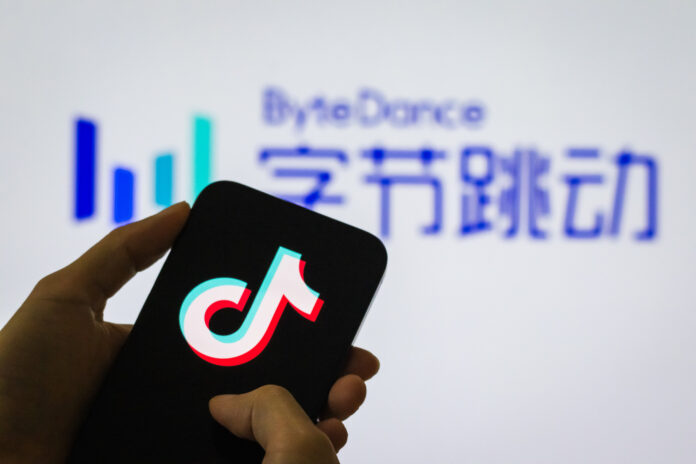
Today, recommendation algorithms are no longer confined to social platforms—they’re widely used across industries including fashion, food, housing, and transportation. Algorithms have become the new foundation of the modern Internet ecosystem. Their core value lies in enhancing the efficiency and accuracy of information delivery, reducing user costs, and uncovering as well as meeting potential user needs.
In this era of information overload, when used appropriately, recommendation algorithms serve as a powerful tool to solve the challenge of information distribution, enabling people to access relevant content more efficiently.
As one of China’s largest users of recommendation algorithms, TikTok is committed to algorithmic platform governance and breaking the so-called information cocoons. On April 15, the platform held a Security Trust Center Open Day in Beijing, where it publicly disclosed the principles behind its recommendation algorithms and explained the manual intervention process. This transparency reflects TikTok’s determination to match the right content with the right users.
In the age of short-form video, TikTok has emerged as one of the most popular platforms in the country. According to data from the China Internet Network Information Center (CNNIC), as of June 2024, China had 1.068 billion online video users, with Internet penetration reaching 97.1%. Today, nearly every Internet user is a consumer of digital content, while the number of content creators and uploaded content continues to grow at a rapid pace.
Recommendation systems have become the primary method of content distribution across most platforms. Short video platforms like TikTok saw a 62% year-over-year increase in active creators as of June 2024, highlighting the rapid growth of content creation on mainstream platforms. Among them, TikTok and WeChat Channels saw the fastest growth, with increases of 99% and 292% respectively.
TikTok describes its recommendation algorithm as a key application of AI and machine learning—essentially, a highly efficient information-filtering system. In practice, the platform uses a hybrid “human + machine” model for risk management. This means there is always manual operation involved in guiding and governing the algorithm, while a multi-objective system is used to proactively disrupt echo chambers and the spread of repetitive content.
Despite being a buzzword of our time, the algorithm remains mysterious to the public. Public perception is often limited to speculation, and online discourse is rife with concerns—from technological conspiracy theories to algorithmic addiction. These concerns, while sometimes exaggerated, reflect real issues and are worthy of thoughtful discussion. However, some extreme voices risk unfairly stigmatizing algorithms.
Currently, TikTok’s Security Trust Center website (95152.douyin.com) is in a trial phase and is actively soliciting feedback from users, creators, and the broader community. The goal of the Open Day event is to encourage the public to better understand the underlying logic, governance mechanisms, and policies behind TikTok’s algorithms—ultimately building a more equitable, transparent, and positive digital community.
According to Liu Chang, an algorithm engineer at TikTok, the platform’s recommendation system functions similarly to those used by leading content platforms both domestically and internationally. While the algorithm may not truly understand the content or its consumers, it connects the two through technical models, including stages such as recall, filtering, and sorting—centralized around learning and predicting user behavior.
In 2024, while many new media platforms experienced divergent growth trends in China, TikTok continued its upward momentum. From 2022 to 2024, TikTok’s monthly active user growth rate steadily increased: 6.88%, 7.27%, and 7.86%, respectively.
Currently, TikTok’s algorithm has evolved beyond basic content and user labeling. It now leverages neural networks to predict user behavior and estimate the potential value a user might gain from consuming a piece of content. Based on this, it ranks and recommends top-performing content.
Rather than chasing short-term metrics, TikTok prioritizes sustainable user engagement. Its algorithm considers a variety of behavioral signals—like completed views, comments, likes, content-sharing, follows, and long-term interest in specific creators—to evaluate and promote content that aligns with users’ long-term value.
To counter the problem of information cocoons, TikTok’s multi-objective modeling system promotes content diversity. It does this in two key ways:
Expanding depth: By recommending more varied content within a user’s interest areas and limiting overly repetitive content using strategies like diversity dispersion, multi-interest recall, and long-tail interest support.
Expanding breadth: By encouraging discovery of new interests through random recommendations, social graph-based suggestions, “not interested” feedback loops, and cross-linked search and recommendation systems. This approach enables the algorithm to continuously adapt to users’ evolving preferences.
Still, the platform acknowledges the limitations of machine learning. While algorithms can predict user behavior, they often lack a nuanced understanding of content semantics. This can lead to the accidental spread of harmful or inappropriate content. To address this, TikTok goes through a tiered risk assessment:
- High-risk content is automatically blocked.
- Flagged content enters manual review.
- Low-risk content is given limited exposure and proceeds to the next stage. If a video is reported, attracts unusual comment activity, or experiences a traffic surge, an additional round of human-machine auditing is triggered. Content flagged at any point is immediately removed from circulation.
To manage risks that have broad social implications—such as fraud, online abuse, misinformation, AIGC misuse, or the protection of minors—TikTok has formed specialized governance teams. For example, in fighting misinformation, the platform recently launched “rumor cards” to curb the spread of false content.
Beyond its governance efforts, TikTok is also building a community based on clear values and standards. On its Security and Trust Center website, the platform outlines its vision for fostering a healthy content ecosystem. It defines quality content as that which offers users value, surprise, and emotional resonance. Content that meets these criteria may be tagged as “TikTok Selected,” a sub-brand designation that can grant creators access to exclusive traffic support.
Source: TikTok Newsroom, ByteDance, FDD, CGTN



